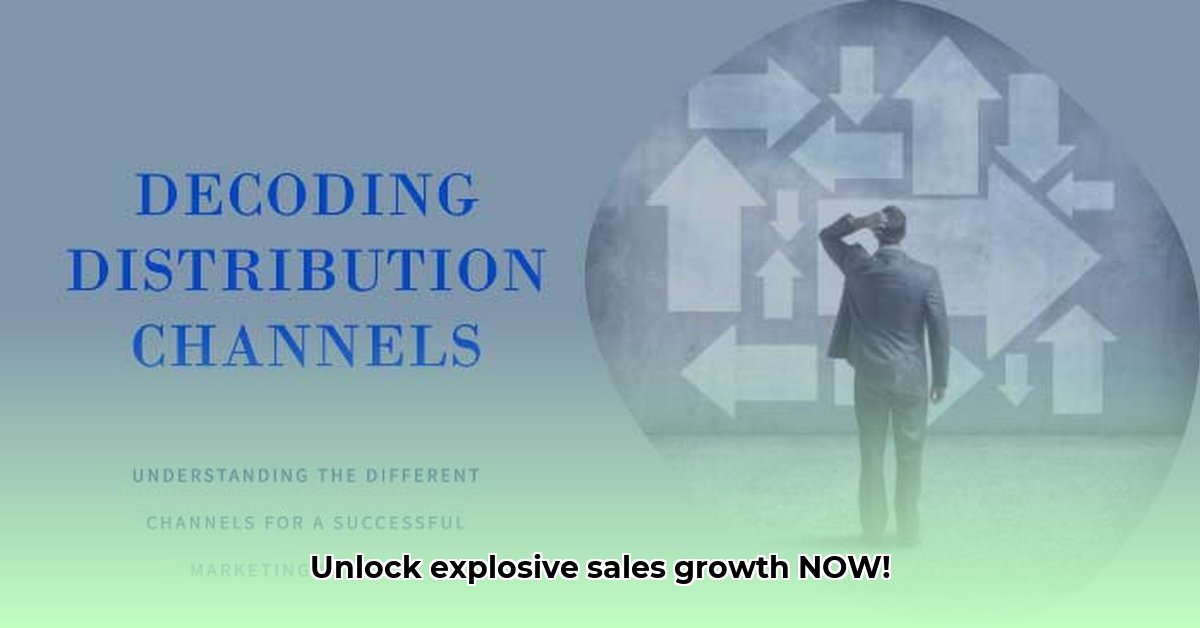
Choosing the right marketing channels to boost sales quickly can feel overwhelming. This guide provides a clear, actionable framework for selecting the best approach, tailored to your specific needs and resources. We'll explore various options, highlighting their strengths and weaknesses, to help you craft a winning strategy.
Understanding the Race to Faster Sales
There's no single "fastest" channel; success depends on your product, target audience, and budget. However, a strategic blend of methods can significantly accelerate your sales growth. Before diving in, let's consider some key channels and their distinct advantages.
E-commerce: Your Instant Online Store
Selling online via platforms like Amazon or Shopify offers immediate access to a vast customer base. This makes it highly attractive for startups, particularly with the detailed sales data available. However, fierce competition demands a unique product and strong marketing to stand out.
- Upsides: Huge reach, potential for rapid sales, valuable performance data.
- Downsides: Intense competition, platform fees, need for a professional online presence.
Social Media Marketing: Fast Engagement, Fleeting Trends
Social media platforms like Instagram, TikTok, and Facebook enable quick connections with potential customers. Brand awareness, lead generation, and website traffic can increase rapidly. Immediate feedback allows for agile campaign adjustments. However, reliance on organic reach alone is risky due to ever-changing algorithms and short-lived trends.
- Upsides: Direct customer engagement, relatively low cost (initially), quick feedback loops.
- Downsides: Algorithm volatility, risk of low organic reach, ROI tracking challenges.
Pay-Per-Click (PPC) Advertising: Instant Traffic, Instant Costs
PPC advertising (Google Ads, Facebook Ads) delivers immediate website traffic. The pay-per-click model feels like buying an audience, but this comes at a cost. Traffic ceases when you stop paying. Therefore, it's crucial to strategically leverage PPC for impactful conversions rather than continuous, unsustainable campaigns.
- Upsides: Guaranteed website visits, highly targeted audience selection, immediate results.
- Downsides: Can be expensive, demands expertise to run efficiently, lacks long-term organic visibility building.
Direct Mail: A Surprisingly Effective (Niche) Strategy
Don't dismiss direct mail. Its tangible nature and personalized approach can be powerful, especially for specialized products or specific demographics. It cuts through digital noise, but it’s slower to reach a large audience and more costly than digital options. Employ it strategically as a supplementary tactic as opposed to your primary sales driver.
- Upsides: High engagement with targeted groups, tangible and memorable impact, surprisingly effective in certain niches.
- Downsides: High cost per lead, slower response times, difficult to accurately measure campaign ROI.
Crafting Your Winning Channel Mix: A Step-by-Step Guide
The most effective approach is often a multi-channel strategy. The following steps will guide you to building a winning combination:
Define Your Ideal Customer: Thoroughly understand your target audience's demographics, online behavior, and media preferences. This forms the foundation of your marketing decisions.
Establish Clear Goals: Define quantifiable goals. What constitutes "fastest results" for your business? Clear benchmarks will guide your strategy.
Allocate Budget Wisely: Distribute resources strategically across different channels based on predicted ROI. This may involve starting with smaller campaigns to test efficacy before scaling up.
Maintain Consistent Branding: Ensure consistent messaging across all channels to maintain a unified brand identity for maximum impact.
Implement Robust Tracking and Analysis: Continuously monitor campaign performance using analytics and A/B testing to fine-tune your approach.
Adapt and Iterate: Stay agile. The marketing landscape constantly evolves. Regularly review and adapt your channel mix based on actual campaign performance.
Mitigating Risks and Maximizing ROI
While each channel offers advantages, potential risks necessitate a diversified approach. Algorithm changes, fluctuating costs, and data privacy regulations all play significant roles. Spreading your efforts and tracking results effectively will help minimize potential setbacks. Remember that providing excellent customer value remains paramount for long-term growth.
Key Takeaways:
- A multi-channel approach usually yields faster results than focusing on a single channel.
- Different channels are most effective at different stages of the customer journey.
- Your ideal channel mix will hinge on your unique audience, product, and budget.
- Consistent testing and analysis are essential for optimization.
- Even traditional methods like direct mail can find their niche and deliver strong returns.
This structured approach, combined with consistent monitoring and adaptation, will help you achieve faster sales growth while mitigating potential risks. Remember, the most effective strategy is the one that best suits your unique business needs.